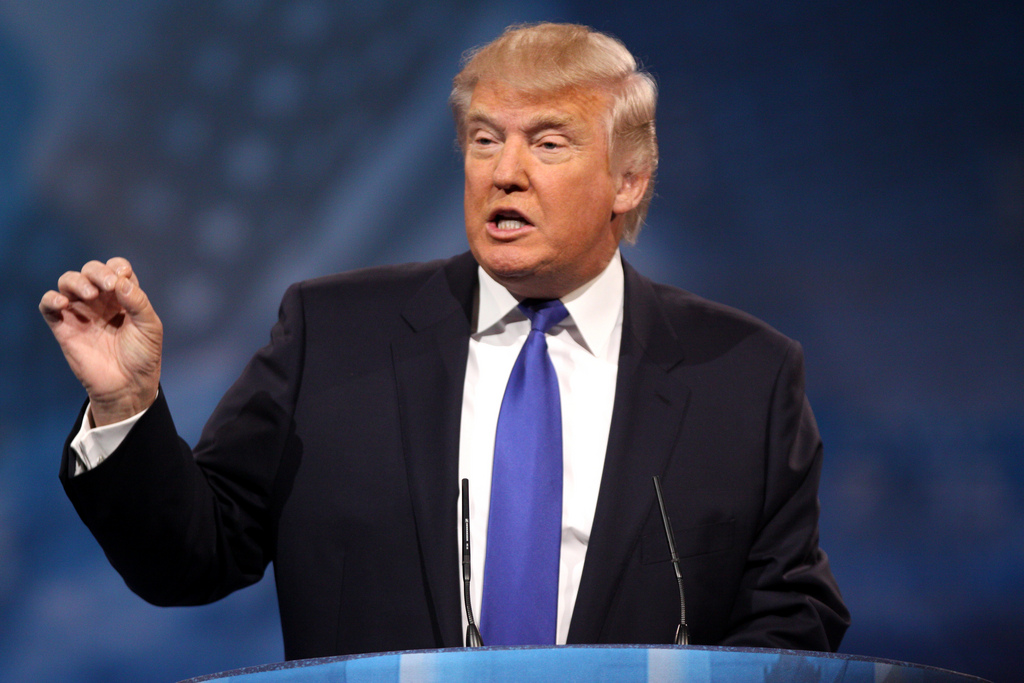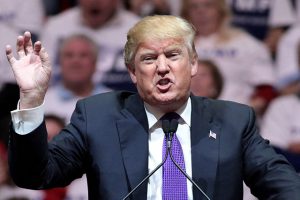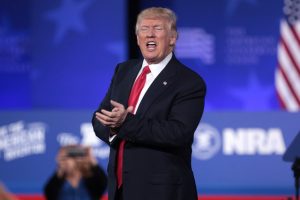by Diana Ohlbaum
The Trump administration’s steady stream of assaults on diplomacy has become a raging river. It started during the campaign, with Trump’s tirades against the Iran nuclear deal, the Paris climate accord, and various trade agreements. Declaring himself the “most militaristic person in the world,” candidate Trump advocated killing the families of terrorists and seizing Iraq’s oil fields, both of which would be war crimes. He bashed the United Nations as “not a friend” of the United States, freedom, or democracy.
Trump escalated these attacks under his presidency, berating not just the goals and institutions of diplomacy, but the people who carry it out. He and his team have vilified civil servants, fired career State Department officials, and threatened dissenters. Defamation of government employees has, in fact, become a “signature theme” of Trump’s first 100 days in office.
After filling his cabinet with generals and appointing a secretary of state with no previous government or diplomatic experience, Trump has starved the State Department of senior officials, leaving hundreds of key positions empty. Home alone, Secretary Tillerson has performed something of a disappearing act, absenting himself from key meetings and major decisions. Career diplomats reportedly have been told not to speak to him directly or even to make eye contact. Tillerson welcomed a budget proposal that would eviscerate U.S. international presence and programs with cuts of nearly a third.
Slash and Reorganize
Reorganization of the foreign policy bureaucracy is the next wave of aggression. As part of chief White House strategist Stephen Bannon’s quest for the “deconstruction of the administrative state,” each agency has been instructed to submit a reorganization plan to “improve the efficiency, effectiveness, and accountability of federal agencies, including, as appropriate, to eliminate or reorganize unnecessary or redundant federal agencies.” A newly released guidance memo requires initial drafts of agency reform plans by June 30.
There is no doubt that the State Department and the 20-odd other departments and agencies that carry out foreign assistance activities could benefit from streamlining and reform. But make no mistake: the purpose of this effort, and its likely result, is not to achieve greater efficiency or effectiveness. It is to sow chaos and destroy Americans’ faith in government.
The first clue is that decisions have been made before a review has been completed. The “skinny budget” released in March calls for the elimination of six U.S. foreign policy agencies, including one—the Overseas Private Investment Corporation (OPIC)—that is actually making money for the U.S. Treasury, having generated $2.6 billion for deficit reduction during the Obama administration alone. And although each agency is supposed to submit its own reorganization plan, the U.S. Agency for International Development (USAID) has been barred from developing a proposal, since Trump and his team are bent on dismantling it.
This is not the first time there have been efforts to slash international spending and restructure U.S. foreign policy institutions. Yet previous reorganizations have failed to save money or improve results. The merger of the Arms Control and Disarmament Agency (ACDA) and the U.S. Information Agency (USIA) into the State Department in the late 1990s effectively downgraded both functions and did not reduce overall international affairs spending. It just transferred responsibilities and budgets to new offices. USIA’s culture never meshed well with State’s, and in January 2017, then-Director of National Intelligence James Clapper said that the USIA should be revived “on steroids.”
Learning from the 1990s
Five lessons emerged from the painful experience of mission closures, reductions-in-force, and organizational changes of the 1990s:
- It costs money to save money. The up-front financial costs of closing diplomatic facilities and terminating workers are exceptionally high, with savings only in the out-years. Breaking leases, selling property, relocating staff, shipping furniture and vehicles, removing or destroying sensitive equipment, paying for severance packages, buy-outs, and early retirements, and fighting lawsuits all cost significantly more than the status quo. Diplomatic presence will not be easy or cheap to reestablish later.
- Penny-wise can be pound-foolish. It is far more expensive to maintain employees overseas than in D.C. headquarters. But cutting foreign posts only increases the relative size of the Washington bureaucracy and the burdens placed upon it. Conversely, sacrificing a greater number of Washington-based positions in order to limit reductions to representation abroad will leave the State Department without the staff to produce congressionally mandated reports, respond to public and media inquiries, and provide background and analysis for high-level decision-making.
- Reorganization has efficiency and opportunity costs. Reductions-in-force are not easy, procedurally or psychologically. Civil service and Foreign Service rules create a complex mishmash of “bumping” rights that make it nearly impossible to get rid of low-performers. Instead of individuals being fired, specific positions are eliminated, setting off a chain reaction of desk-switching that is difficult to predict or control. Lack of clarity about whether employees will be able to keep their jobs and ranks, which functions they will be performing, where they will be sitting, and who they will be reporting to leads to low morale and lost productivity. Very little work gets done in an agency being reorganized, a process that can drag out for years.
- Expectations never diminish. Even if the workforce is sharply reduced, Congress and senior foreign policy officials are unlikely to scale back their demands. Reports, activities, and procedures are either required by statute or necessary for the fair and legal functioning of the executive branch. Without a clear, consensual, long-term plan to pare down essential functions, the work will end up being done by outside contractors—often the very same people who were just laid off from the government (or who jumped ship for higher salaries).
- Big isn’t necessarily beautiful. Just as corporations launch spinoffs, affiliates, and subsidiaries to protect their brands and management structures while allowing for experimentation, the U.S. government creates specialized agencies like OPIC and the Millennium Challenge Corporation (MCC) to encourage innovation and escape ossified bureaucratic structures. Although administrative consolidation could achieve some financial savings, it would also introduce new inefficiencies and restrain flexibility.
It is tempting to believe that money can be saved and performance improved by restructuring the foreign policy agencies. But Trump’s reorganization order is an ideologically driven agenda for undermining the power and effectiveness of government institutions. Without a fair and inclusive process for identifying problems, analyzing causes, proposing remedies, approving changes, and implementing reforms, Secretary Tillerson will find himself presiding over the State Department’s destruction.
This is the third of four articles on how U.S. soft power ends. The first, on diplomacy and development aid, can be found here. The second, on dismantling USAID, can be found here. The fourth, on foreign aid reform, can be found here.






Can you clarify how the “threatened dissenters” link supports that claim? I followed it because it shocked me that the Trump administration would do that, but I don’t see anything in that article about it.